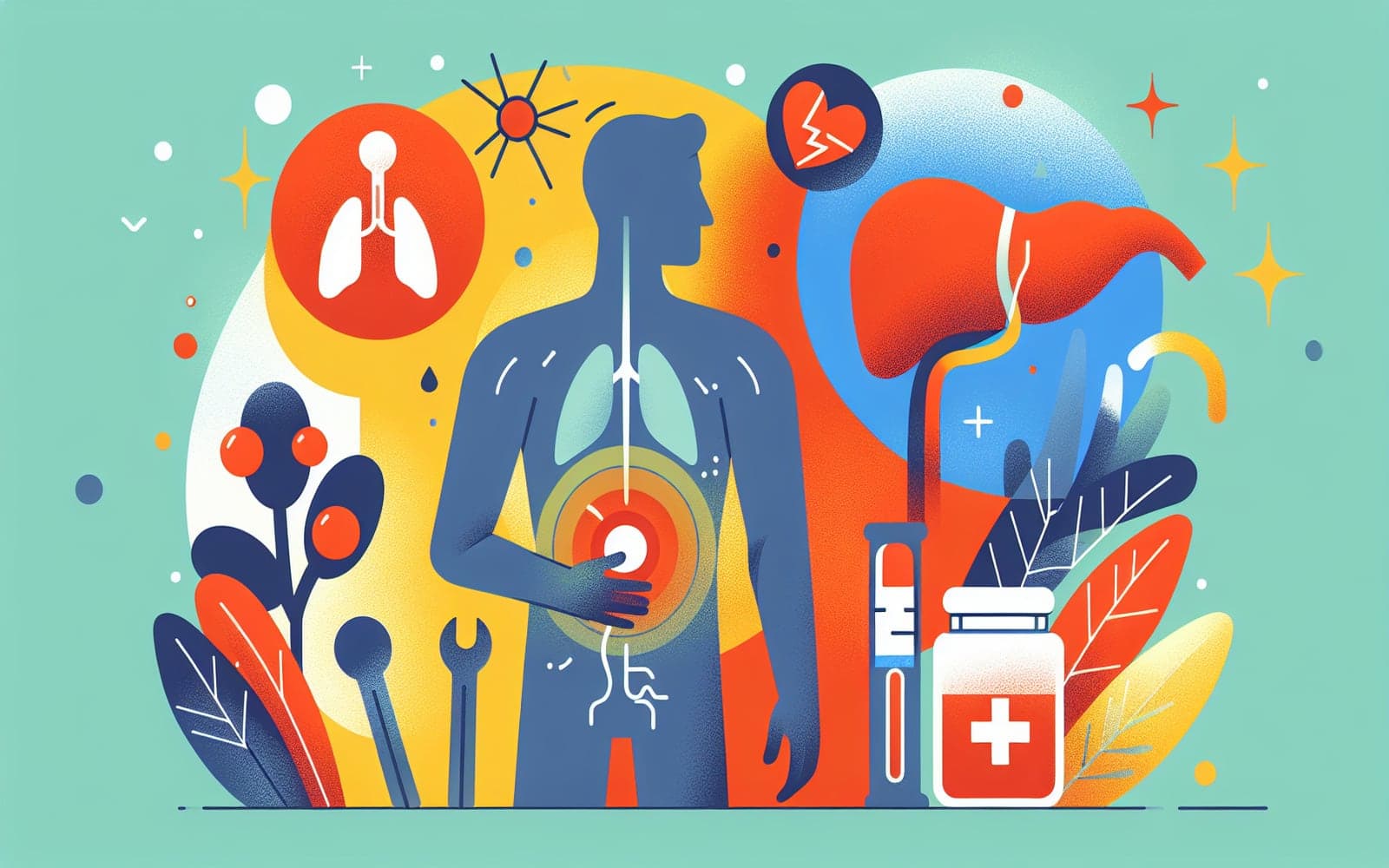Decoding the Pain: Key Symptoms of Acute Cholecystitis You Shouldn't Ignore
Published: Jul 31, 2024
Acute cholecystitis, or sudden inflammation of the gallbladder, comes with a set of distinct symptoms. Recognizing these signs early can lead to prompt diagnosis and treatment, potentially preventing serious complications.
Contents
The Telltale Pain
The hallmark symptom of acute cholecystitis is pain, typically in the upper right part of the abdomen or the center of the belly. This isn't just any pain - it's often described as severe and steady, lasting longer than typical stomach aches. Imagine a constant, gnawing sensation that doesn't let up. The pain may radiate to the right shoulder or back, acting like a distress signal from your gallbladder.
Beyond the Pain: Associated Symptoms
Acute cholecystitis often comes with a supporting cast of symptoms. Fever is common, usually low-grade but sometimes higher. Nausea and vomiting frequently accompany the pain, as if your body is trying to expel the source of discomfort. Loss of appetite is also typical - the thought of food may seem unappealing when your gallbladder is inflamed. These symptoms together create a constellation that points towards gallbladder trouble.

The Murphy's Sign: A Doctor's Clue
During a physical exam, doctors often check for a symptom called Murphy's sign. When the doctor presses on the upper right abdomen while the patient takes a deep breath, pain may suddenly increase, causing the patient to catch their breath. It's like a secret handshake between the patient's body and the doctor's trained hands, signaling potential gallbladder inflammation. While not definitive on its own, a positive Murphy's sign is a strong indicator of acute cholecystitis.
Frequently Asked Questions
Symptoms often persist for several days without treatment.
While possible, persistent symptoms are more common in acute cholecystitis.
Older adults may have less pronounced symptoms, making diagnosis challenging.
Stress doesn't cause acute cholecystitis but may exacerbate symptoms in those with gallstones.
Key Takeaways
Recognizing the symptoms of acute cholecystitis can lead to early diagnosis and treatment, potentially preventing serious complications.
Experiencing symptoms that might suggest acute cholecystitis? Don't hesitate to discuss your concerns with Doctronic for prompt evaluation and guidance.Related Articles
References
Trowbridge RL, Rutkowski NK, Shojania KG. Does this patient have acute cholecystitis? JAMA 2003; 289:80.
Kurzweil SM, Shapiro MJ, Andrus CH, et al. Hyperbilirubinemia without common bile duct abnormalities and hyperamylasemia without pancreatitis in patients with gallbladder disease. Arch Surg 1994; 129:829.
Always discuss health information with your healthcare provider.